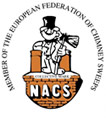Installation Information
The fireplace is the main focal point of any room and weather you choose a classic traditional look set into a brick built chimney or a super modern, high efficiency fireplace you should be confident that the fire you do choose is right for YOU. This is why we have put this guide together to help you determine what sort of fire would work best within your home.
To find a registered contractor capable of installing your electric fire in your area please visit NICEIC, the UK’s leading voluntary regulatory body for the electrical contracting industry.
Gas Safe Register
The Gas Safe Register replaced CORGI on 1st April 2009.The Gas Safe Register will offer the public an improved service making it easier to find and check an engineer is qualified to do the work you would like him to do. To find a Gas Safe registered business and to check each individual engineer to see what work they are qualified to do visit www.gassaferegister.co.uk or call the dedicated helpline on 0800 408 5500.
Every Gas Safe registered engineer has a photo ID card with a unique licence number and details of the work they are qualified to carry out. To check this information simply enter the engineer’s licence number on the website or call the helpline.
Understanding your chimney
The flue is the route that the gas fumes take from the fire to the open atmosphere. Below you will see some pictures of what you should expect to see at roof level - this may help in identifying your flue and therefore helping you to make the correct choice of fire for your application.
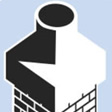
Class I
This type of flue is easily recognised by a brick built chimney maybe at the ridge of the roof or part way down, often terminating in a clay chimney pot. Looking inside the flue you will see approx. 7” minimum diameter whether of brick or clay liner construction, and having a minimum of 3m overall height. In order to restrict the ingress of rain and prevent birds from entering your flue, you may wish to have a chimney cowl fitted.
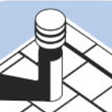
Class II
Usually constructed of interlocking metal pipe and found in newer homes, the roof level will show a metal terminal with ‘louvre’ style slots and an internal diameter of 5” minimum. Inside the lounge opening you may see a metal box lining the chamber - this will dictate the depth of fire that you can chose.
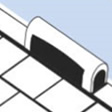
Pre-Cast Flue
Pre-cast flues are constructed of concrete blocks that bridge between the inner and outer walls of the property, and terminate with a raised ridge tile at the roof level. There are two main flue sizes - those found in houses built prior to 1986 are generally 210mm x 65mm, and after this flue sizes increased to a cross sectional area of 16,500mm2 with no dimension less than 90mm.
No Chimney Options
If you can’t see a chimney or Flue as described above then you may require a Balanced Flue or Power flue gas fire.

Power Flue
This type of flue is easily recognised by a brick built chimney maybe at the ridge of the roof or part way down, often terminating in a clay chimney pot. Looking inside the flue you will see approx. 7” minimum diameter whether of brick or clay liner construction, and having a minimum of 3m overall height. In order to restrict the ingress of rain and prevent birds from entering your flue, you may wish to have a chimney cowl fitted.
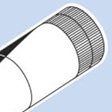
Balanced Flue
Usually constructed of interlocking metal pipe and found in newer homes, the roof level will show a metal terminal with ‘louvre’ style slots and an internal diameter of 5” minimum. Inside the lounge opening you may see a metal box lining the chamber - this will dictate the depth of fire that you can chose.
Open & Closed Combustion
You may also here people talk about combustion as a type or form of flue/chimney, this relates to the way in which the fire uses oxygen to ignite, below is some information relating to these terms and should assist you in gaining the correct knowledge to make an informed decision.
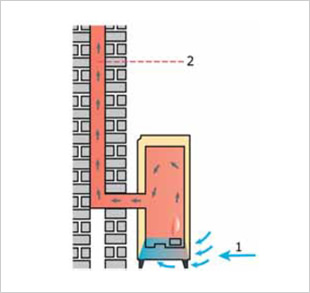
Open Combustion
Open combustion fires are otherwise known as Conventional Flue fires, this means it draws air for combustion from inside the room.
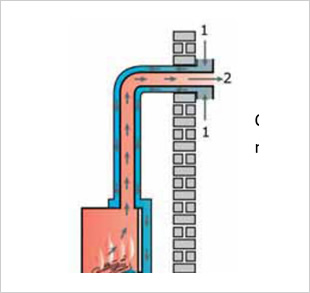
Closed Combustion
Closed combustion fires are otherwise known as Balanced Flue fires, this means it draws air for combustion from outside through a concentric flue
The key advantage of installations is that they do not require a working flue to expel exhaust gases, simply a 3 pin socket or switched fused spur on a normal ring main. If an electric ‘suite’ or ‘hang on the wall’ electric fire is selected, they will simply go against a flat wall and be secured by means of a bracket (you will need to use the correct fixings for your wall type). An ‘inset’ or ‘hole in the wall’ type electric fire will normally require a recess to house the engine of the fire - this may be either a conventional chimney breast or alternatively a purpose built false chimney breast (the ‘inset depth’ dimensions can be located on the product information pages). Some inset fires can be installed by ‘bridging the cavity’of a brick / block wall, however you should not use this method on a timber framed property as you may pierce the vapour membrane and allow moisture to penetrate the rear of the fire. If creating an opening in a wall to house the electric fire, always be sure to install the correct width of lintel to support the opening.
Electric Stoves & Baskets
Electric Stoves are freestanding and do not require specialist installation. Most electric fires have an overheat thermostat which will turn off the fire in the event of it overheating. It is therefore advisable to block off any chimney or cavity to prevent draughts from allowing the fire to remain turned on in this situation.
Learn more about the different heating options that our Brilliant Fires utilise...
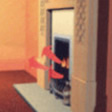
Radiant Heat
All fires give off radiant heat. Radiant heat is like being warmed by the sun. The heat moves (radiates) outward from the fire into the room, the closer you get to the fire the warmer you will feel.
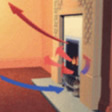
Convected Heat
Convected heat occurs when a fire actively draws in cold are from the room, passes it through a heat exchanger to warm it up and directs it back out into the room as warm air. This feature gives a more rapid and even heat distribution throughout your room and these products are known as convectors.
Real logs, pebbles and forest debris are used to create the most impressive and realistic fire beds…
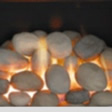
Pebble Bed
All fires give off radiant heat. Radiant heat is like being warmed by the sun. The heat moves (radiates) outward from the fire into the room, the closer you get to the fire the warmer you will feel.
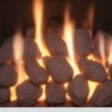
Coal Bed
Coal beds are often used on more traditional fires. This type of fuel bed has been designed to imitate a real coal burning fire.
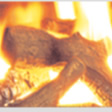
Log or Driftwood Bed
As an alternative to pebble or coal, the larger log effect or thin pieces of driftwood give an authentic look as the flames rise between the ceramic pieces.




